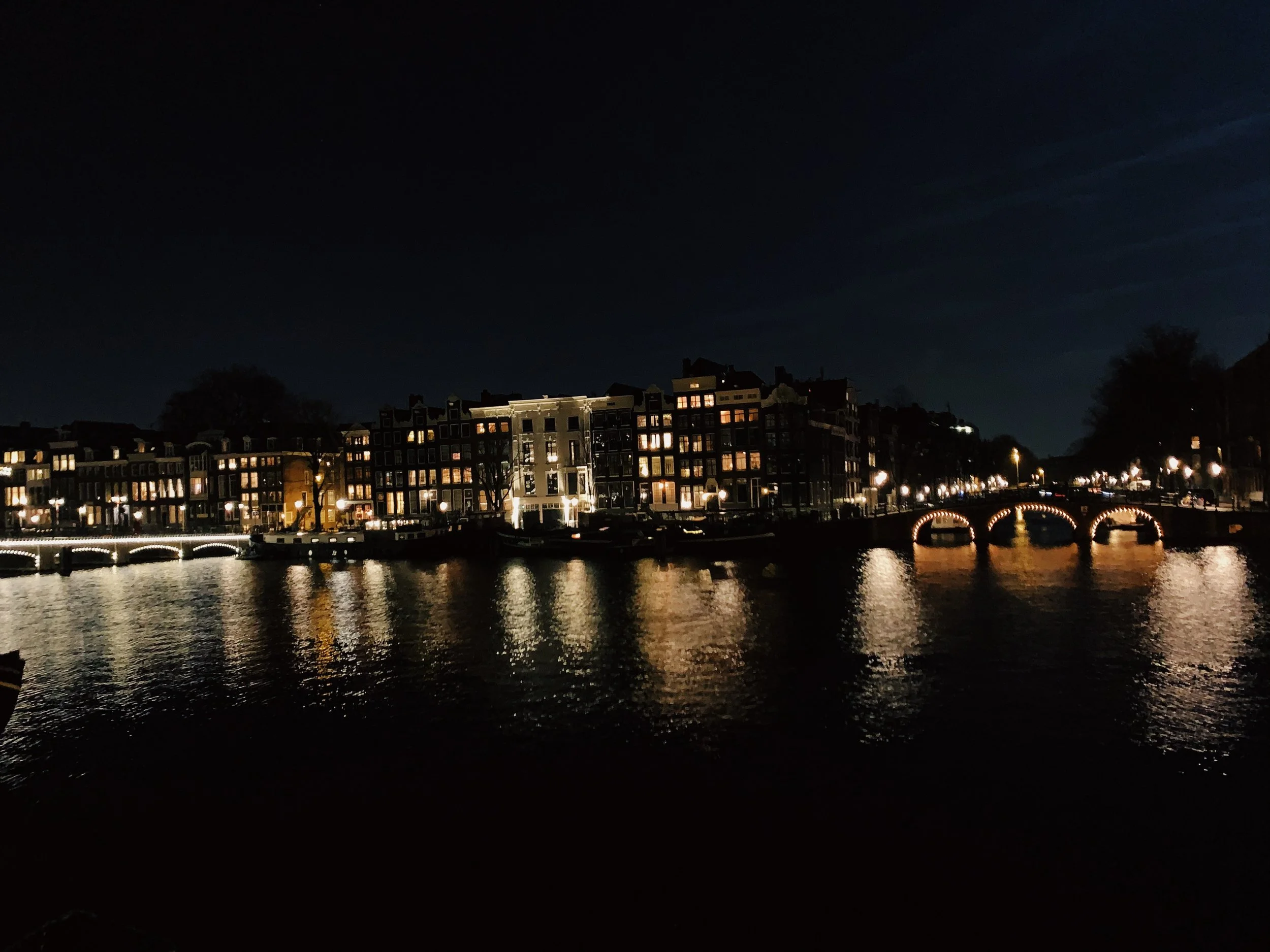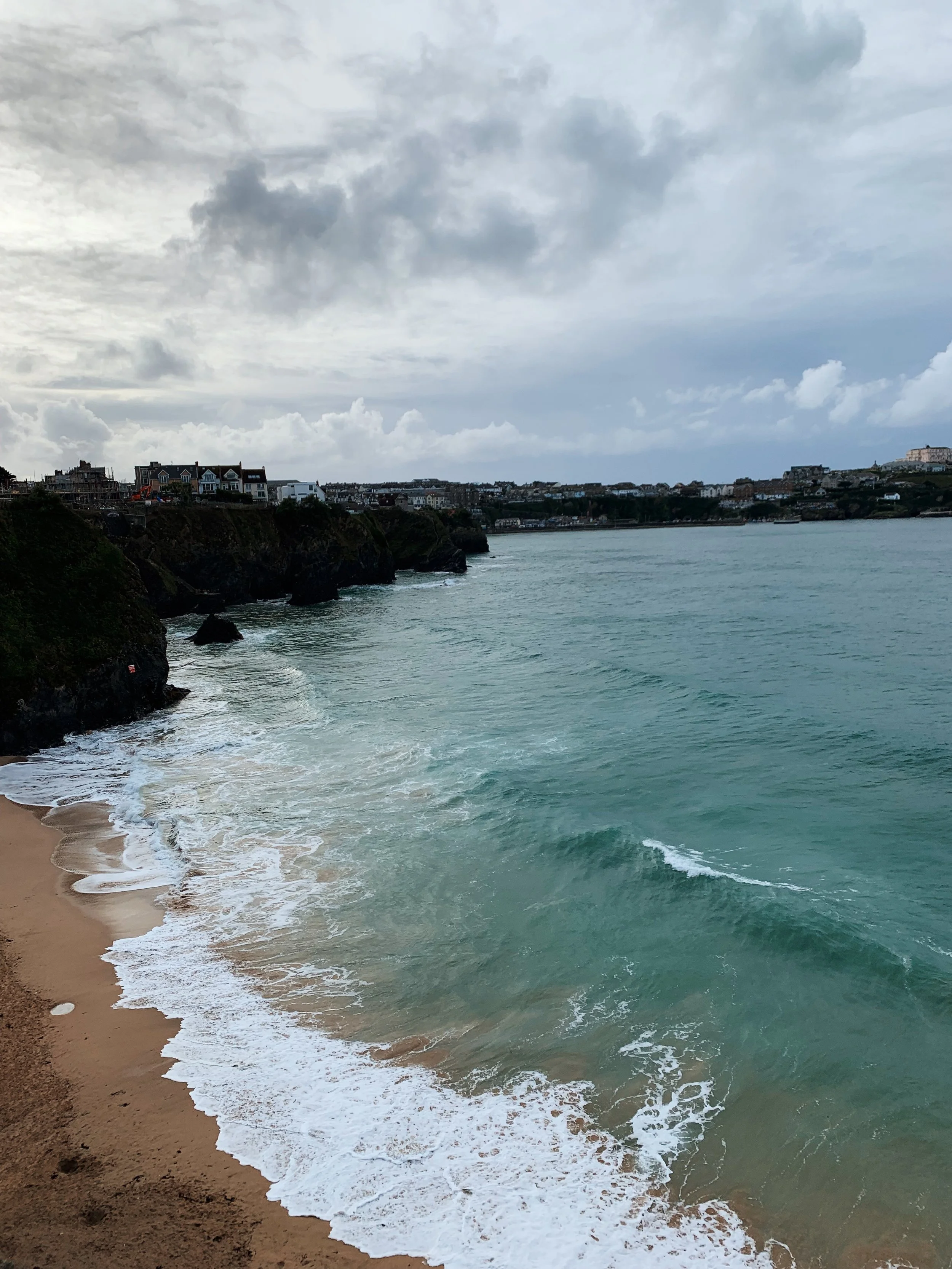Stepping Back into Spirituality
“Living is a joy. Dying in order to begin again is also a joy. Starting over is a wonderful thing, and we are starting over constantly.”
It is truly magical how practicing the simple act of breathing in and breathing out has the power to transport you to a completely different dimension mentally, emotionally, and spiritually.
Though there are common misconceptions of these eastern Buddhist teachings as a tool only useful for times of turmoil, anxiousness, and hopelessness. However, practicing these principles and exercises when you are free from all these troubles can be rejuvenating and enlightening. The ability to use them when you are happy is fundamental in understanding their purpose for when you are unhappy.
Newquay
In the past, spirituality has been medicinal in returning to myself when I have been lost. At this phase of my life, I am learning to utilise the practices of mindfulness when I am found too. Not only to keep moving forward, but to realise that the consequences of past actions influence my present self, and to absorb these discoveries; using mindfulness to unravel these thoughts to craft a beautifully genuine future for me and the universe.
These personal endeavours towards spiritual enlightenment are not something separate from our surroundings. Sometimes, being busy, or caught up in miscellaneous tasks allows our minds to wander – for others, it is trapped stalking a goal, and never seeing peace until it is reached; for some it is aimlessly drifting without a Sheppard. None of these make you less than the other. Neither one makes you superior or inferior. Your goals or lack of, and what you chose to do in this life is in your hands. But it is impossible to ignore the role in which society plays in constructing these ideologies that we internalise. We are connected with the people we meet, the places we reach, the experiences we make and lives we touch. In Buddhism, meditation is an essential tool that aids humanity to return to ourselves. It can be easy to be caught up in ourselves when searching for meaning, occasionally, accidentally disregarding others, the environment, and the Earth. It is vital to remain connected to all – to practice the mindfulness art of interbeing. This Buddhist philosophy acknowledges that everything is interlinked. Though this is something that I will further discuss in later entries with regards to Eco-spirituality; this thought has framed one of the key factors that have influenced this choice of hyperawareness, with the daily application of mindfulness during mundane situations.
I remember the beginning of my journey as a yearning (near desperation) to stop my attachment towards destructive engagements with toxic people. It had reached the point where I had passed the stage of numbing melancholy. The feeling is unexplainable now, as I am currently outstretched across my living room sofa, with my ginger kitten crawled in a ball beside me (isn’t life sweet?). Nonetheless, during that time, the gut-wrenching, soul-crushing realisation, arrived like an avalanche. I had found myself trying to escape having to feel anything, which backfired in the long run:
“We suffer because we want to deny ourselves. We want to become something else, and so we never stop running.”
As Thich Nhat Hanh suggests that suffering can surface from this very emotion of powerlessness from your thoughts, with the desire to retreat, trying to find solitude in somewhere, or someone, without a true anchor of who you are – is why suffering is elevated. Yet, it is conveyed in later chapters that this is what makes us human:
“This is a simple thing that everybody knows, but you may need to be reminded of it: you are much more than your emotions.”
In retrospect, wondering when everything fell apart wasn’t even the beginning. But central to the unearthing of who I am now. Thich within this book teaches us to understand the source of the issues that has risen, specifically how to overcome them:
“Embrace the pain that is coming to the surface.
Breathing in, I know that you are there, my dear anger, my dear despair.
I am there for you; I will take care of you.”
The art of breathing.
A new chapter was pending for me. It was my job to encounter a resolution for the happy ending.
After some time, I recognised that this was a journey. A flowing river. I was simply at a bend, drifting away to with the water, experiencing life, accumulating experiences as I move closer and closer to the sea. Even then, my journey moves on and on. This practice is that it teaches us the duality of everything: simultaneously never-ending, and ephemeral.
The teachings from Thich Nhat Hanh’s ‘You Are Here’, produced a light that changed and guided me significantly.
He begins the book with:
“Breathing in, I know I am breathing in.
This simple statement is the essence of Buddhist practice. You can build a satisfying and fruitful life on it. You can help yourself and others. You can experience the world as pure and joyful. You can even become enlightened.
Breathing out, I know I am breathing out.”
Disclaimer for the public: I am not a spiritualist. I partake in the occasional yoga, however, not as often as I would like; I am irregular when it comes to attempting to meditate daily; I am (arguably) passionate about social and political inequalities. There are days when I respond to negativity with controlled compassion and other times where I react regretfully. I am extremely emotional, extroverted and consume pain like a sour sweet: quickly and with no poker face. I cry often, and laugh loudly. There are many traits that I possess that does not completely align with the traditional values of Buddhist teachings. Much of my behaviours, actions and thoughts are compilations of my humanness. Moreover, I am trying.
“Many people aspire to go to a place where pain and suffering do not exist, a place where there is only happiness. This is a rather dangerous idea, for compassion is not possible without pain and suffering. It is only when we enter into contact with suffering that understanding, and compassion can be born. Without suffering, we do not have the opportunity to cultivate compassion and understanding; and without understanding, there can be no true love. So, we should not imagine a place where there is no suffering, where there is only happiness. That would be a very naive idea.”
As I have reached this stage, coming to nearly four years of trying to comprehend what it is that I want within this life – the conclusion is always uncomplicatedly simple: happy.
I am trying to implement mindfulness to find the delightful moments in life as they are in their truest forms. From a smile from a stranger in a crisp, chilly, yet, bright, summer morning; in a warm hug from a loved one; in the way I chose happiness despite everything that has happened. The way that I will keep choosing happiness despite everything that has yet to happen.
Even the shift in my perception within the last few years, I have remained content and blissful with this life. It has aspired me to craft a microcosm in which, my loved ones and friends have the same vision. Being a happy person can mean I too can be a refuge for all the beings around me.
Though, returning to the practice can be harrowing; like a previously injured athlete, coming back to training after months of hiatus. Getting familiar with the basic ins and outs again can initiate particular emotions that are difficult to deal with but are essential in progression and healing.
Nonetheless, this reminds us that the river still flows. Appreciating that impermanence is constant, enables the reconciliation back to the self, which we must constantly teach and remind ourselves.
That is exactly what I am in the process of doing right now.
“Don’t wait to start living. Live now! Your life should be real at this very moment… You can live every moment of every day deeply, in touch with the wonders of life. Then you will learn to live, and, at the same time, learn to die. A person who does not know how to die does not know how to live, and vice versa. You should learn to die – to die immediately. This is a practice.”





